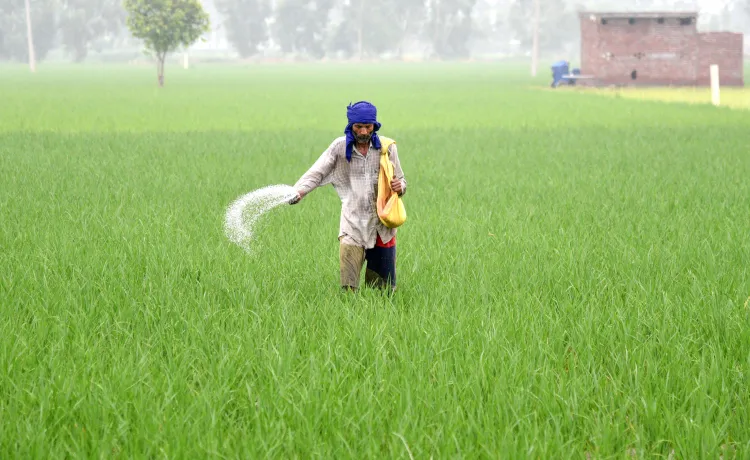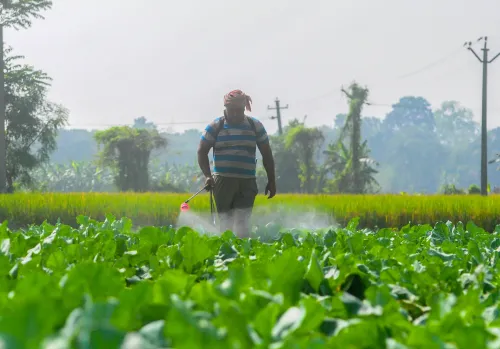Has the total area sown under kharif crops in India crossed 995.6 lakh hectares?

Synopsis
Key Takeaways
- The area sown under kharif crops has increased to 995.63 lakh hectares.
- Rice cultivation area is reported at 364.8 lakh hectares.
- Pulses area slightly up at 106.68 lakh hectares.
- Coarse cereals area increased to 178.73 lakh hectares.
- Improved monsoon rains have facilitated better sowing conditions.
New Delhi, Aug 11 (NationPress) The total area cultivated with kharif crops this season has seen an increase of 38.48 lakh hectares, reaching 995.63 lakh hectares thus far in the year, as per data released by the Ministry of Agriculture and Farmers Welfare on Monday. This marks a notable rise compared to 957.15 lakh hectares during the same timeframe last year.
This expansion in sown area bodes well for enhanced production, likely to boost farmers' incomes and aid in controlling food inflation.
According to official statistics, the area dedicated to rice stands at 364.8 lakh hectares as of August 8 this year, up from 325.36 lakh hectares in the prior year.
The area for pulses such as urad, moong, and others is reported at 106.68 lakh hectares, slightly up from 106.52 lakh hectares last year.
Meanwhile, the land covered by coarse cereals or millets, including jowar, bajra, and ragi, has surged to 178.73 lakh hectares this season, compared to 170.96 lakh hectares the previous year.
This increase in sown area is attributed to improved monsoon rains, which have benefited sowing in the unirrigated regions of the country, comprising nearly 50 percent of India’s farmland.
Additionally, the area under sugarcane has risen to 57.31 lakh hectares from 55.68 lakh hectares in the same period last year.
On May 28 this year, the Cabinet Committee on Economic Affairs, led by Prime Minister Narendra Modi, sanctioned an increase in the Minimum Support Prices (MSP) for 14 kharif crops for the marketing season 2025-26. This move aims to provide remunerative prices to farmers and encourage production.
The highest absolute MSP increase over the previous year has been recommended for nigerseed (Rs 820 per quintal), followed by ragi (Rs 596 per quintal), cotton (Rs 589 per quintal), and sesamum (Rs 579 per quintal).









